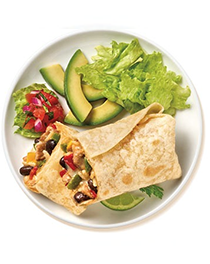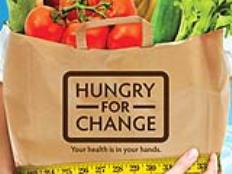
By clicking on the product links in this article, we may receive a commission fee at no cost to you, the reader. Sponsorships and affiliate commissions help support our research so we can help you find the best products. Read full affiliate disclosure here.
Not sure how to meal prep? For years I was adamantly anti-meal prep. This was after several attempts that usually sputtered and stalled before coming to a screeching stop. I had convinced myself that it was time-consuming, expensive, and overwhelming. And, it was, but this had little to do with the activity of meal prepping, and a lot to do with the meal prepper.
However, a few months ago I dusted my BPA-free glass storage containers off and committed to getting it right. Since then, I have definitely course-corrected and learned some tricks that made the process easier, like buying foods with long shelf life. Now, I’m happy to share a beginner's guide on how to meal prep, including four easy steps that simplify the process.
Lose Weight in 2023 with 50% Off Plans and 50% Off a Month of Shakes and Free Shaker Bottle with NUTRISYSTEM:
What is Meal Prep?
In its simplest form, meal prepping consists of making recipes or food items such as grilled meats or roasted vegetables and packaging them into individual portions so that they are readily available at a later date.
Depending on your individual or family needs, you can check out various methods such as batch cooking, make-ahead meals, individually portioned meals, and quick, easy ingredients to see what works best for you.
Batch Cooking
When you batch cook, you chef up a lot of the same food at one time. These are typically versatile items such as boneless, skinless chicken breasts or ground beef that pair easily with a variety of items. This makes putting together a meal a breeze because you already have what you need for a well-balanced, nutritious meal. So, if you have chicken prepped and ready to go in the fridge, as well as rice and veggies—boom, there’s your whole meal.
Portion your prepared food into individual or family portions once you’re done cooking. Or, if you want to have it on hand for a later date, store it in an airtight container and freeze it.
Make-Ahead Meals
Make-ahead meals are exactly what they sound like: meals you make ahead of when you’ll need them. This differs from batch cooking because it’s not a variety of foods that go together, but rather an entire meal that’s stored and ready to go. Many popular make-ahead meals are casseroles that are combined into one dish.
After a busy day of work and after-school activities, you may not have the time or energy to prepare a nutritious meal. On days like this, make-ahead meals, such as an enchilada casserole with black beans and quinoa or crockpot Sloppy Joes, are the unsung heroes that we all need. This makes storage and clean-up a snap.
Individually-Portioned Meals
Individually portioned meals are great for lunches or if you have people in your household who don't like all of the same foods. In this case, you can prepare an entire meal (like tacos or stir fry), then divide it up evenly among however many containers you’re using. This is one of the most helpful methods when you want to meal prep for a series of days or an entire week.
I often pack up leftovers from dinner in individual containers so that we can grab them for lunch the next day. I also use this method for nights when my family may not be eating at the same time.
Easy Ingredients
Bag salads, steamable vegetable packs, rotisserie chickens, and microwavable rice and quinoa packages are some of my favorite items to keep on hand. They all have one thing in common—convenience. Each of these items takes less than 5 minutes to cook.
This meal prep style is handy on the days that I haven't prepped something specific. I’m no longer tempted to order pizza when I don’t have a full meal prepared because I can easily whip up a meal with these easy ingredients.
Meal Prep Benefits
The main reason that I started meal prepping was to eat healthier, and specifically to get more fruits and vegetables into my diet. And, it has helped tremendously. However, eating more quality food is just one of the several benefits of meal prepping.
Time Saver
One of the reasons that I resisted meal prepping for so long was because of the amount of time that I thought that I was going to be using to prepare meals. And, although it does take some time to plan and make your meals, it actually pays off because of the amount of time you save throughout the week.
Portion and Quality Control
By using individual containers, you can only package a certain amount of food in each one. This immediately helps with how much you consume in a setting. And, by preparing your own foods, you know exactly what you are putting in your body. This is vastly different from eating out or ordering delivery because restaurant portions are typically laden with butter, oil, and salt and are usually much larger than what a standard serving should be.
Budget Friendly
It may seem like meal-prepping, especially if you're using quality ingredients, is more expensive than cooking on a daily basis. Granted, the upfront cost may be high because you're buying in bulk. However, when you break the cost on a per meal basis, you're actually saving money. Additionally, having prepared meals on hand keeps you from dining out or turning to delivery which can certainly add up.
Stress Reliever
There have been times when I feared that the seemingly innocuous question of "What's for dinner?" would make me snap and go on strike from providing any more meals for my family. Coming up with a dinner plan, cooking it, and then packing lunches was often the very last thing I wanted to think about after a long day of work. By meal prepping, I have eliminated this stress from my life (and, everyone I live with is thankful).

How to Meal Prep: Step by Step
If you're thinking about starting your own meal prep, don't go into it blindly. By prepping to prep, you can avoid getting overwhelmed when you start. Follow these steps, and you’ll be a meal prep pro in no time.
Find Your Food Containers
Reusable food containers come in all shapes and sizes, with the most common materials being glass and plastic. If your budget allows, I'd recommend that you invest in some quality BPA-free glass containers with airtight lids. However, don't let the lack of glass containers keep you from your food prep goals. I utilize both glass and plastic, and while I try to keep foods that I want to reheat in the container in glass, I have found that plastic is just peachy for items that don't need to be reheated. I'd also recommend grabbing a couple of bento box storage containers so that you can keep foods separated.
Create Your Menu
One of the main things that kept knocking me off the meal prep wagon was the idea that I had to come up with an assortment of elaborate, time-consuming meals. This overwhelmed me and made me resentful of the process. It was when I decided to batch cook that I realized I was overcomplicating the process. It’s helpful to spend some time thinking about what you’re in the mood for that week foodwise, but try to keep your meals as simple as possible. Decide if you need to meal prep for breakfast, lunch, and dinner, or only one of those meal times. Then, plan what you want to heat and go from there.
Hit the Grocery Store
Once you have your containers and decide on your meals for the week (or weekend, or whatever amount of days you’re prepping for), it’s time to hit the grocery store. I often shop online and pick up my groceries to save time. However, I have found that this can be problematic with fresh produce and items such as bagged salads. When I do in-person shopping, I can check the ripeness of produce and make sure that the salad bags aren't going to expire before I plan to use them. You can always ask your grocery store manager to see when various items are restocked. This ensures that you're getting your food at its peak freshness.
Schedule Time to Meal Prep
Everyone's schedule is different, therefore there is no reason to think that you need to adhere to a certain timeframe to be successful at meal prep. However, it is important that you dedicate a block of time to do it. For me, I typically block off some time on Sunday and Wednesday evenings.
Tip: Set a time limit and stick to it. We also make it a family affair where each person tackles a different portion of the process. This helps cut down on the time it takes and allows everyone to develop a closer relationship with the food they’re eating.
Our Top Meal Prep Tips
I have made many pit stops and detours during my food prep journey. I've done it all wrong. I've resented the process. However, I am glad that I gave it one more go, and took a different approach this time around. One of the biggest mistakes that I made was starting off too hot. I thought the only way to be successful at meal prepping was to prepare a variety of elaborate meals for breakfast, lunch, and dinner every day of the week. This may work for some, but it absolutely did not work for me. Here are some of the tips that helped me stick to meal prepping:
Keep it Simple
This was the most important aspect for me. Cooking isn't one of my favorite activities. Therefore, the thought of spending hours upon hours in the kitchen measuring, dicing, and sauteing, filled me with dread. So, for our weekday meals, I keep it simple by cooking foods such as taco meat or shredded chicken. These foods are versatile, and combining them with different ingredients provides enough variety so we don’t get burnt out from eating them.
Best Meal Prep Foods
Here are some of my favorite foods to prep:
- Rice/Quinoa
- Pasta
- Ground beef
- Grilled chicken
- Hardboiled eggs
- Overnight oats
- Greek yogurt
- Beans
- Roasted vegetables (broccoli, cauliflower, Brussel sprouts, sweet potatoes)
- Raw vegetables (spinach, celery, carrots, bell peppers, cabbage, cucumbers)
- Whole fruit (apples, oranges, pineapple, bananas)
- Nuts and seeds
- Cheese
- Hummus and salsa
Build Balanced Meals
Meal prepping is a great way to control your portions and build a balanced, nutritious meal. A healthy plate should have 50 percent fruits and vegetables. Whole grains such as quinoa, oats, brown rice, and proteins like chicken, fish, and beans each take up a fourth of the plate.
Other tips that you should take into account when building a nutritious, balanced meal are:
- Use healthy plant oils (in moderation)
- Low-fat doesn't necessarily mean healthy
- Avoid sugary drinks
- The type of carbohydrates is more important than the amount of carbohydrates
Follow Food Safety
Statistics routinely show that the majority of food poisoning cases come from food prepared and consumed at home.
Therefore, it’s extremely important to make sure that you’re following proper food-safety guidelines.
1. Wash your hands—a lot.
2. Sanitize your workstations.
3. Make sure that your foods are cooked to the proper temperature:
- Beef, pork, veal, and lamb (whole cuts) - 145 degrees
- Ground beef and pork - 160 degrees
- Poultry (whole and ground), casseroles, and leftovers - 165 degrees
4. Date your food and throw it out if you haven't eaten it in an appropriate amount of time:
- Seafood - 3 days
- Salad - 3 days
- Meats - 4-5 days
- Vegetables - 3-4 days
5. Let food cool down before putting it in the fridge.
6. Use the microwave reheat button (this helps leftovers get to the recommended temperature).
7. When in doubt, throw it out.
Cons
While Meal prepping can be a wonderful solution, if you lack the skills, don't have the time, or simply can't stand eating "leftovers," it's not a viable option. Takeout is not the solution. Fast food and ultra-processed fare are laden with sugars, trans fats, and unhealthful additives and preservatives. They can be tasty, but they're often filled with calories and devoid of crucial nutrients. Your best bet is to find a healthy-meal delivery service. Keep this in mind when deciding which option is best for your time.
Happy Prepping
Meal prepping may seem like a lot of work. However, if you break it down and figure out what works best for you, it can make your life easier (and your waistline smaller!). Follow these tips and start prepping today!
Why Trust Us?
ACTIVE.com's editorial team relies on the knowledge and experience of fitness and wellness experts including competitive athletes, coaches, physical therapists, nutritionists, and certified trainers. This helps us ensure the products we feature are of the highest standard. Collectively, the team has spent countless hours researching equipment, gear, and recovery tools in order to create the most accurate, authentic content for our readers. Customer satisfaction is also a key part of our review process, which is why we only feature products that are highly rated.
How to Meal Prep | Foods with Long Shelf-Life | Foods to Buy in Bulk | Cheap Meal Prep Ideas | Meal Prep Recipes | Meal Prep Containers | Meal Prep Services | Best Freezers








Discuss This Article